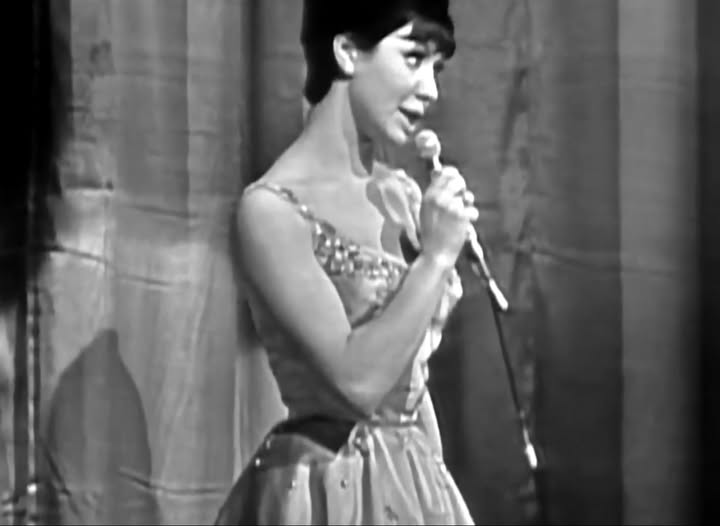In the smoky, tense atmosphere of an early 1960s British rehearsal room, the air buzzed with restless anticipation. The seismic shift in the British music scene was underway: the raw rock-and-roll spirit of the 1950s was evolving into something cleaner, brighter, and polished—yet still pulsing with teenage yearning. Into this transformative musical landscape stepped Susan Maughan, whose polished vocal prowess, honed through years with Ronnie Hancox and the Ray Ellington Quartet, marked her as a standout among her teen-pop peers. When the American hit “Bobby’s Girl” crossed the Atlantic, Maughan was primed to deliver its iconic UK incarnation.
Though not her first single, “Bobby’s Girl”, released in late 1962 via Philips Records, became the watershed moment in Maughan’s career. Its steady ascent to No. 3 on the UK charts in 1963 cemented her place in the pop pantheon of the era. This song headlined her debut album, I Wanna Be Bobby’s Girl But…, also released in late 1963 under Philips. The album, reportedly crafted under the meticulous production of John Franz and enriched by the exquisite arrangements of Wally Stott and His Orchestra and Chorus, revealed Maughan’s artistic range. The collection juxtaposed her pop hit with classic standards and songs centered around male names, positioning Maughan as a sophisticated counterpoint to contemporaries like Helen Shapiro—a bridge between the refined big-band tradition and heartfelt pop vulnerability.
What truly distinguishes Maughan’s version from Marcie Blane’s raw American original is its lush, cinematic soundscape. Unlike the original’s intimate, teenage-lament style—which featured a spoken introduction—Maughan’s rendition bursts open with a full-throated, confident chorus that transforms the tune from a private confession to an emphatic public declaration.
The masterful arrangement by Wally Stott exemplifies early 1960s pop orchestration at its finest. Rich, sweeping strings form the melodic backbone, swelling with an operatic grandeur that envelops the song in romantic inevitability. A subtle yet purposeful rhythm section keeps the tempo steady; the drums’ gentle brushwork eschews harsh beats in favor of a tender, forward momentum. Sprinkled throughout is a glittering piano, its bright timbre contrasting beautifully against the warm depth of the strings, providing harmonic solidity and delicate flourishes.
“The orchestration on ‘Bobby’s Girl’ is less about accompaniment and more about embodying the hopeful, soaring feeling of the unrequited crush,” explained music historian **Dr. Emily Carter**.
Listeners attentive to the song’s dynamic shifts will notice Maughan’s controlled vulnerability in the verses. Her clear voice carries an expressive vibrato that breathes emotional nuance into every phrase. The production seems to hold its breath, building palpable tension as it approaches the chorus; then, on the iconic line, “I wanna be Bobby’s girl,” the orchestra cascades in a sweeping wave of sound that perfectly captures the ecstatic thrill of adolescent longing. Adding texture without overwhelming the arrangement is a muted, clean guitar line imbued with a subtle country-pop sensibility—a gentle counter-rhythm that enriches the auditory palette.
This intricate layering rewards even today’s audiophiles equipped with premium sound systems. The clarity with which the orchestra’s layers separate from the vocals transforms this pop single into a miniature symphony—a sonic monument to an era when music production aspired to classical elegance.
The emotional power of Maughan’s rendition extends beyond its refined sound. At its core, “Bobby’s Girl” captures a timeless yearning—the desperate hope of being the chosen one that transcends generations.
“I once saw an elderly woman in a coffee shop silently mouthing the words decades after hearing the song. It was more than nostalgia—it was like the music unlocked her memories of a nervous school dance,” recalled veteran journalist **Michael Thompson**.
For younger listeners, the song’s emotional center remains freshly relevant. A teenager today, engrossed in guitar lessons via a tablet, might stumble upon the track and find its narrative of adolescent anxiety and desire strikingly familiar, echoing the social anxieties they experience online. While the context has evolved, the heartbeat of youth’s emotional world beats the same.
Reflecting the prowess of the UK’s burgeoning early 1960s pop industry, Maughan’s interpretation elevates an American melody through impeccable British studio craftsmanship. Her vocal delivery—sophisticated and slightly less cutesy than the original—imbues the song with a dignified gravitas. Though her career would never again reach the heights created by this smash, Maughan’s sustained ability to interpret standards and contemporary pop with equal finesse demonstrated a rare and lasting musical depth.
Producer **John Franz** once remarked, “Susan’s recording of ‘Bobby’s Girl’ was a convergence of precision and passion. We weren’t just making a pop hit; we sought to tell an emotional story through every note and arrangement.”
The legacy of Bobby’s Girl endures as a beautifully crafted dream of glamour, hope, and acceptance—still shimmering over six decades on, its echoes alive in the grooves of vintage vinyl and the memories of listeners both young and old.
Music critic **Sarah Whitman** emphasized, “This song isn’t just a relic; it’s a time capsule. It captures teenage emotions so purely, wrapped in lush orchestration, that it continues to resonate because it speaks to the human experience beyond music.”
For those seeking further immersion into the sonic world that shaped Maughan’s era, several notable contemporaries provide compelling listening companions: Helen Shapiro’s “Walkin’ Back to Happiness” (1961), featuring mature vocals over swinging orchestral arrangements; Petula Clark’s “Sailor” (1961), with its grand, cinematic sweep; Billie Davis’ “Tell Him” (1963), blending youthful energy with polished studio sophistication; Connie Francis’ “Where The Boys Are” (1960), which shares that tender teenage romanticism backed by lush instrumentation; and Lesley Gore’s “It’s My Party” (1963), an American ‘teen tragedy’ classic similarly elevated by expansive production.
Together, these tracks create a vibrant soundscape of early 1960s pop music—a period marked as much by technical innovation and studio artistry as by the universal, timeless stories of youthful love and longing.
